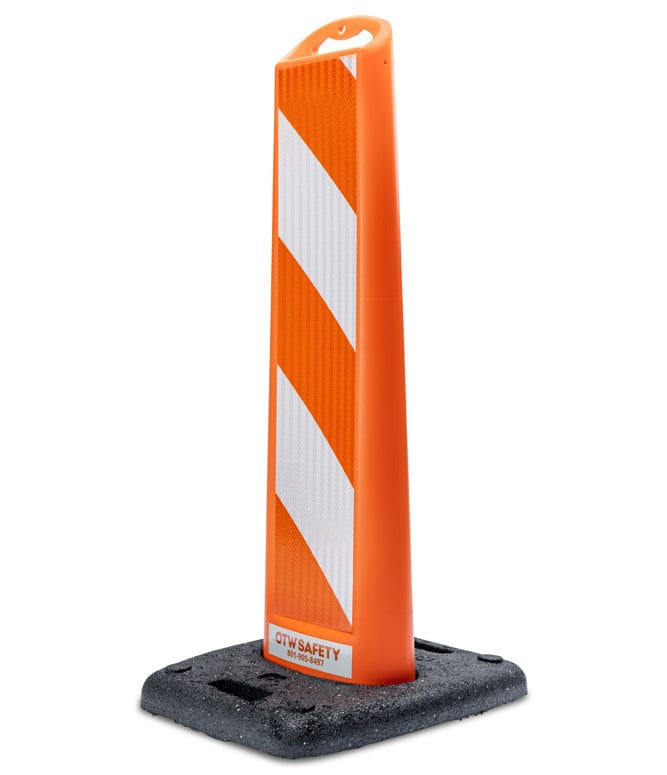4 Tips for navigating work zones safely

Work zones are one of the most dangerous places where pedestrians and vehicles meet, and, as such, require intentionality when navigating.
Pedestrians, in particular, are at higher risk of injury and fatalities, as they have much less protection than those in a vehicle. Yet, it is those in motor vehicles who are more often hurt or fatally injured in work zones due to many factors.
Pedestrians might consist of visitors, contractors, and other individuals who spend time at sites, as well as the construction workers who navigate active work zones daily and individuals passing by. Drivers include those in motor vehicles, cyclists on the road, or powered scooters, among others.
Here are four things to do when entering or passing by a busy construction area:
1. Be aware
One of the best ways to safely navigate a work zone is also one of the most simple: be aware. This strategy applies to drivers, pedestrians, and workers alike. Knowing what (and who) is around you is the first step to keeping work zones safe.
Construction sites use highly visible barricades and signage for a reason: to gain your attention. Not seeing, or worse, ignoring, these signs of an active work zone can spell disaster if something goes wrong. Work zones, especially along high-speed highways, are often lined with bright orange barrels or barricades, concrete barriers, and bright orange signage to indicate where the zone begins, as well as what speed is acceptable at which to drive.
The Associated General Contractors of America (AGC) conducted a nationwide study on highway work zone safety; this study indicated that 64% of highway contractors reported work zone crashes in 2022. Their study also showed that of that 64 percent, 41% reported motorist injuries and 18% reported worker injuries, while 15% reported motorist fatalities and 8% reported worker fatalities. The average, unfortunately, shows that work zone crashes are nearly twice as deadly for motorists than workers, revealing the deep need for higher awareness for all, but in drivers of motor vehicles specifically.
2. Reduce distractions
Reducing distractions and being aware go hand in hand, as it is impossible to be completely aware when your attention is divided. According to the National Highway Traffic Safety Administration (NHTSA), distracted driving claimed 3,522 lives in 2021, and the numbers remain nearly the same year after year.
The Centers for Disease Control and Prevention (CDC) has identified three different types of distracted driving: visual, manual, and cognitive. Visual distractions take your eyes off the road, while a manual distraction takes your hands off the wheel, if even for a moment. Cognitive distractions include things like daydreaming, rocking out to your favorite song, or talking on your phone (which can also be a manual distraction if a hands-free device is not in use).
Distracted driving is one of the main offenders of work zone fatalities; reducing it is the number one objective of the US Department of Transportation (US DOT) in their 2023 Identification of National Work Zone Safety Objectives and Activities Summary Report. Texting, calling, eating or drinking, or fiddling with entertainment all take eyes off the road and move drivers’ attention from safe driving. These distractions are most prevalent in those driving common vehicles, yet drivers of heavy equipment and those walking fall prey to the temptation as well.
This might be the number two tip, but it’s number one on behaviors that will help you navigate a work zone more safely.

3. Drive at an appropriate speed
The US DOT is also looking to decrease instances of motor vehicles traveling at speeds over the posted speed limit, both on the roads and in work zone areas. In 2021, 956 people were killed in work zone crashes. Of these deaths, 778 were drivers or passengers of motor vehicles, while the remaining 164 were pedestrians, workers, or cyclists.
“The men and women of the construction industry are frequently working just a few feet, and sometimes inches, away from speeding vehicles. Drivers who are too often distracted, speeding and/or under the influence crash into those work zones, putting workers and themselves at risk of serious harm and death.”
Ken Simonson, AGC Chief Economist
While the individuals who work on roadways and in active work zones take risks simply by being on the job, that risk should not be added to by drivers who don’t follow the posted speed limit. Speeds are lowered in work zones to enhance construction safety; do your part and reduce your speed to reduce the chances of an accident!
4. Follow posted directions, signage, and barricades
Orange often lines the highway to an upcoming work zone and beyond; you’ll likely see large signage, heavy-duty barricades, or even fence panels with mesh privacy screening. Following directions shown by barricade or sign helps keep you and construction workers safe – don’t miss these important additions to work zones!
That sea of orange you see? OTW helps provide those types of products and more! Our 32” or 42” jersey barricades are perfect for delineating a highway from an active site, while our metal fence panels add extra security to whatever type of construction site you see. Printed warnings, contact info, directional signage, or a logo on our custom mesh privacy screening add even more safety and security to any site and make it even easier to navigate safely.
Walking by a smaller site and seeing barriers directing pedestrians around a temporary area? They might be our pedestrian barricades, which are perfect for the job and can include custom signage to fit any need, letting you know which way you should go and what you should look out for.
OTW is dedicated to keeping construction workers, motorists, and pedestrians alike as safe as possible as they navigate active work zones. Wherever you find yourself encountering a work zone, keep these tips in mind, as they could save your life… or someone else’s!






